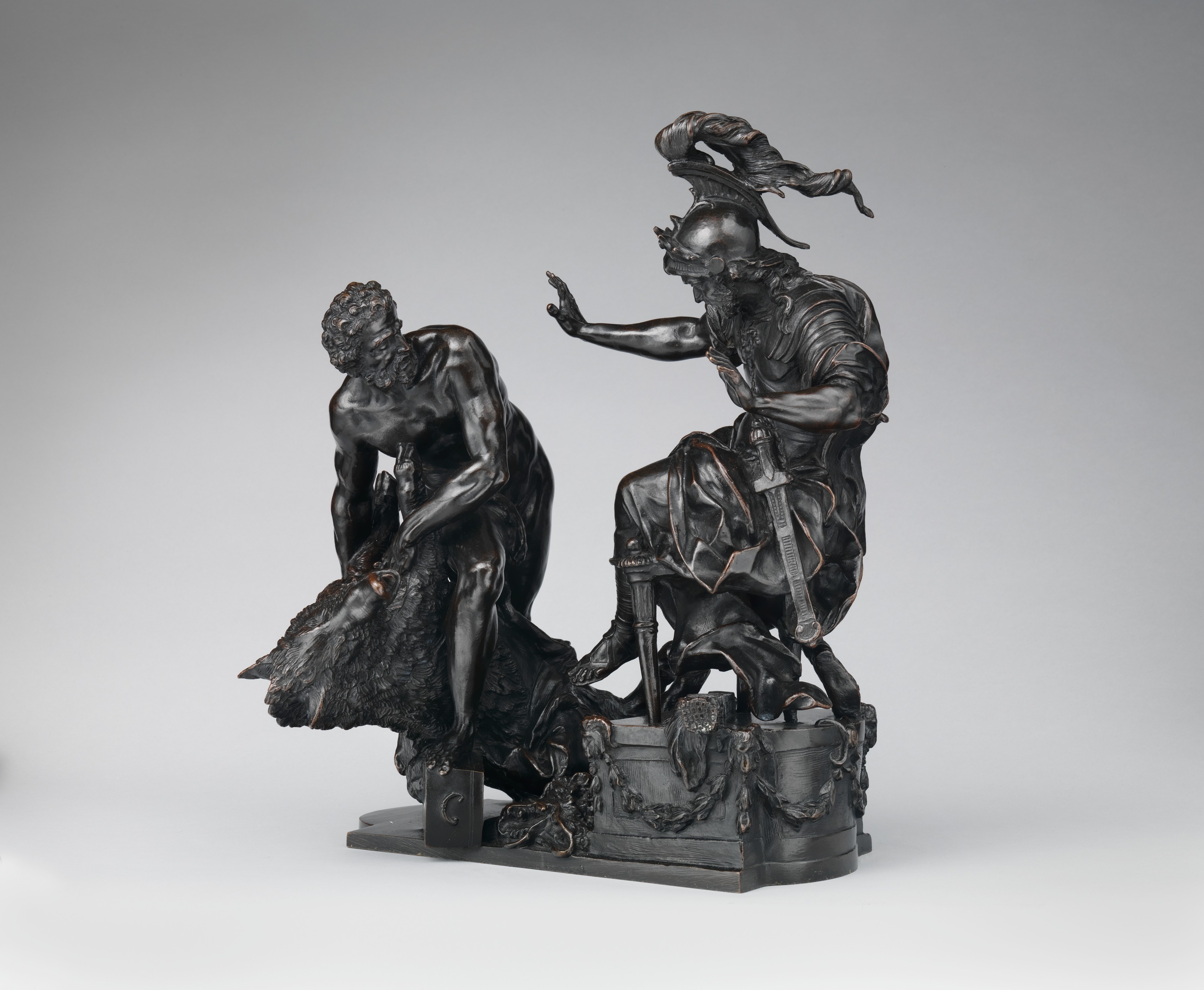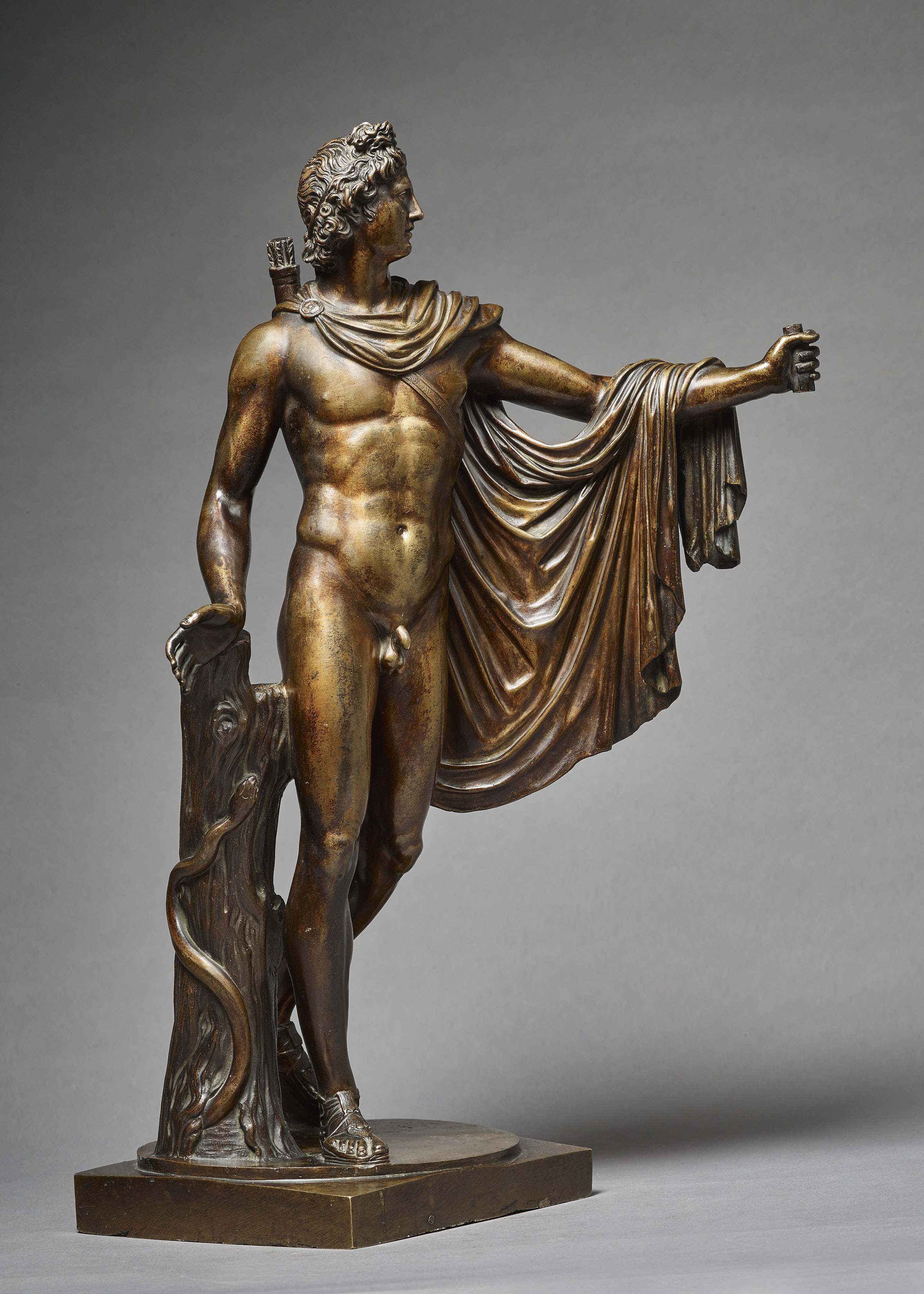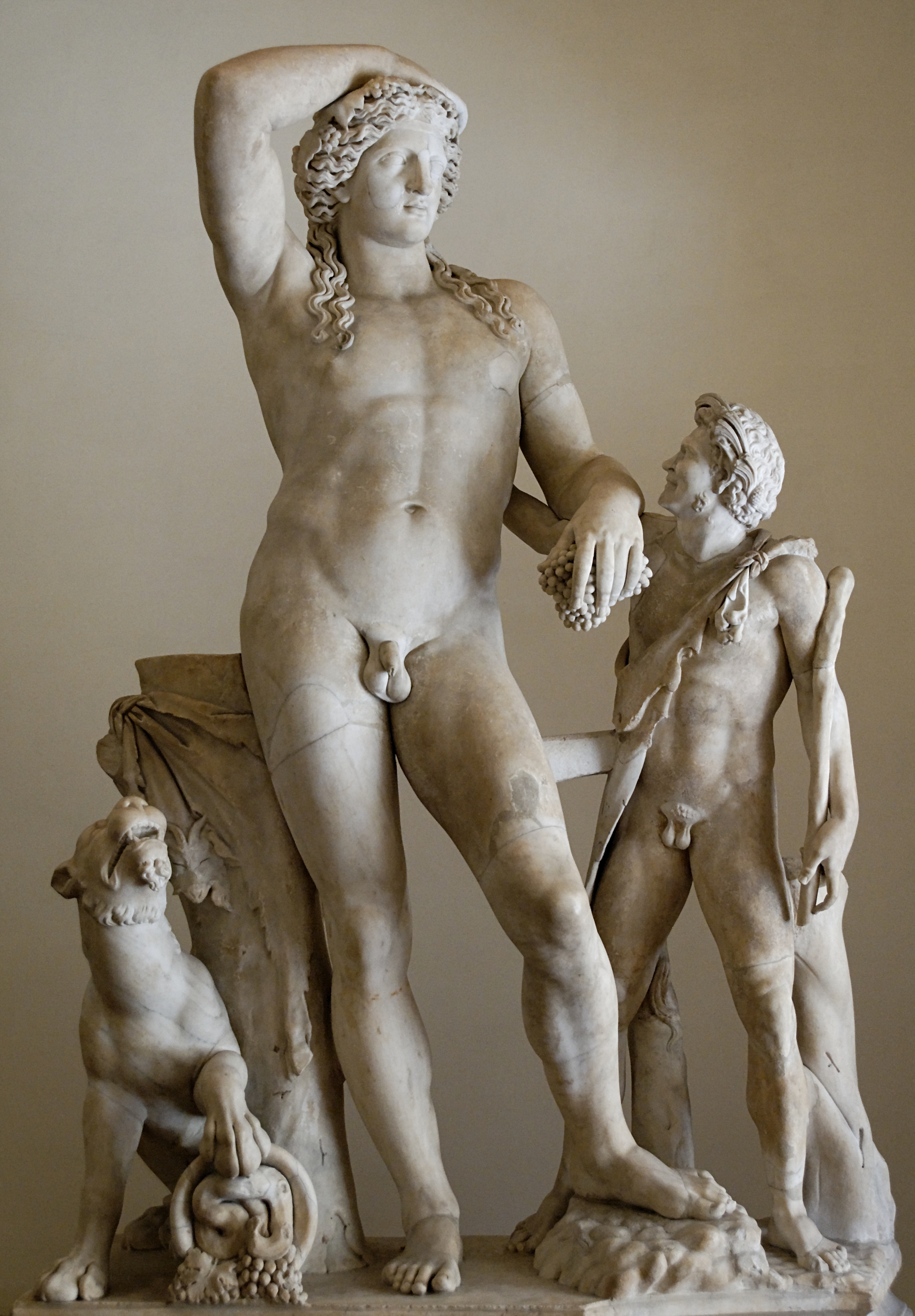|
Ludovisi Gaul
The ''Ludovisi Gaul'' (sometimes called "The Galatian Suicide") is an ancient Roman statue depicting a Gallic man plunging a sword into his breast as he holds up the dying body of his wife. This sculpture is a marble copy of a now lost Greek bronze original. The ''Ludovisi Gaul'' can be found today in the Palazzo Altemps in Rome. This statue is unique for its time because it was common to depict the victor but instead, the Ludovisi Gaul depicts the defeated. Description The statue depicts a Gaulish man or Galatian Celt who has just killed his wife and is holding her lifeless body in one arm and a sword in another, in an attempt to commit suicide. The sculpture is considered a good example of Hellenistic art because of its dramatic characteristics. The postures of the characters are exaggerated and their bodies contort in every way. Each limb is spread out in different directions, which gives the feeling that the figures are coming to life. The statue is dramatic in many ways ... [...More Info...] [...Related Items...] OR: [Wikipedia] [Google] [Baidu] |
Epigonus
Epigonus ( el, Ἐπίγονος) of Pergamum was the chief among the court sculptors to the Attalid dynasty at Pergamum in the late third century BCE. Biography Pliny the Elder, who offers the only surviving list of the sculptors of this influential Pergamene school, attributes to him works among the sculptures on the victory monument erected by Attalus I in the sanctuary of Athena at Pergamum to commemorate his victory over the Gauls of Galatia (223 BCE). Among works there by other sculptors, Pliny attributes to Epigonos a masterful ''Trumpeter'' and "his infant pitiably engaged in caressing its murdered mother"; the male figure in his group, once part of the dedication of Attalus I at Pergamon, is probably the original of the marble copy known in modern times as ''The Dying Gaul'', in the Capitoline Museums The Capitoline Museums (Italian: ''Musei Capitolini'') are a group of art and archaeological museums in Piazza del Campidoglio, on top of the Capitoline Hill in Rome, Ita ... [...More Info...] [...Related Items...] OR: [Wikipedia] [Google] [Baidu] |
Miletus
Miletus (; gr, Μῑ́λητος, Mī́lētos; Hittite transcription ''Millawanda'' or ''Milawata'' (exonyms); la, Mīlētus; tr, Milet) was an ancient Greek city on the western coast of Anatolia, near the mouth of the Maeander River in ancient Ionia. Its ruins are located near the modern village of Balat in Aydın Province, Turkey. Before the Persian rule that started in the 6th century BC, Miletus was considered among the greatest and wealthiest of Greek cities. Evidence of first settlement at the site has been made inaccessible by the rise of sea level and deposition of sediments from the Maeander. The first available evidence is of the Neolithic. In the early and middle Bronze Age the settlement came under Minoan influence. Legend has it that an influx of Cretans occurred displacing the indigenous Leleges, and the site was renamed Miletus after a place in Crete. Recorded history at Miletus begins with the records of the Hittite Empire, and the Mycenaean records of ... [...More Info...] [...Related Items...] OR: [Wikipedia] [Google] [Baidu] |
Laocoön And His Sons
The statue of ''Laocoön and His Sons'', also called the Laocoön Group ( it, Gruppo del Laocoonte), has been one of the most famous ancient sculptures ever since it was excavated in Rome in 1506 and placed on public display in the Vatican Museums, where it remains. It is very likely the same statue that was praised in the highest terms by the main Roman writer on art, Pliny the Elder. The figures are near life-size and the group is a little over in height, showing the Trojan priest Laocoön and his sons Antiphantes and Thymbraeus being attacked by sea serpents. The group has been called "the prototypical icon of human agony" in Western art, and unlike the agony often depicted in Christian art showing the Passion of Jesus and martyrs, this suffering has no redemptive power or reward. The suffering is shown through the contorted expressions of the faces (Dr. Guillaume-Benjamin Duchenne pointed out to Charles Darwin that Laocoön's bulging eyebrows are physiologically impossible) ... [...More Info...] [...Related Items...] OR: [Wikipedia] [Google] [Baidu] |
Louis XIV Of France
, house = Bourbon , father = Louis XIII , mother = Anne of Austria , birth_date = , birth_place = Château de Saint-Germain-en-Laye, Saint-Germain-en-Laye, France , death_date = , death_place = Palace of Versailles, Versailles, France , burial_date = 9 September 1715 , burial_place = Basilica of Saint-Denis , religion = Catholicism (Gallican Rite) , signature = Louis XIV Signature.svg Louis XIV (Louis Dieudonné; 5 September 16381 September 1715), also known as Louis the Great () or the Sun King (), was King of France from 14 May 1643 until his death in 1715. His reign of 72 years and 110 days is the longest of any sovereign in history whose date is verifiable. Although Louis XIV's France was emblematic of the age of absolutism in Europe, the King surrounded himself with a variety of significant political, military, and cultural figures, such as Bossuet, Colbert, Le Brun, Le Nôtre, Lully, Mazarin, Molière, Racine, Turenne, a ... [...More Info...] [...Related Items...] OR: [Wikipedia] [Google] [Baidu] |
François Lespingola
François Lespingola (Joinville, 1644 - Paris, 16 July 1705) was a French sculptor in the team that provided original sculptures, vases and copies after the Antique for the gardens at Versailles. From 1665 until 1675, Lespignola was a student in Rome at the Académie de France. In 1675, he became a member of the Accademia di San Luca. Once he returned to France, Lespingola was received as a member of the Académie royale de peinture et de sculpture in 1676. His main employments were royal works at the Palace of Versailles and elsewhere. The ''Ludovisi Gaul'', then known as ''Arrius and Paeta'' was copied by Lespingola in Rome in 1684 for Versailles: it still stands, paired with Laocoön Laocoön (; grc, , Laokóōn, , gen.: ), is a figure in Greek and Roman mythology and the Epic Cycle. Laocoon was a Trojan priest. He and his two young sons were attacked by giant serpents, sent by the gods. The story of Laocoön has been the su ..., at the entrance to the Tapis Vert. Lesp ... [...More Info...] [...Related Items...] OR: [Wikipedia] [Google] [Baidu] |
Giovanni Francesco Susini
Giovanni Francesco (Gianfrancesco) Susini (c.1585 – after 17 October 1653) was a Mannerist Florentine sculptor in bronze and marble. Life Susini was born in Florence, and trained in the workshop of Giambologna. He continued to work in Giambologna's style, and Susini's sculpture was already mistaken for that of his master by the end of the century. His uncle, Antonio Susini, was the principal bronze-caster of Giambologna, and the young Francesco received early training as a junior member of Giambologna's workshop. A trip to Rome in 1624-26 gave him first-hand experience of classical antique, 16th century, and the emerging Baroque statuary, latter exemplified by Bernini's youthful ''Apollo and Daphne'', but his own Mannerist style was already matured. He made wax copies of the recently discovered Borghese ''Hermaphroditus'' for casting upon his return to Florence. His bronze reduction of the Laocoön is likely based on the copy of it in Florence. As a sculptor, Susini is k ... [...More Info...] [...Related Items...] OR: [Wikipedia] [Google] [Baidu] |
Sextus Marius
The Tarpeian Rock (; Latin: ' or '; it, Rupe Tarpea) is a steep cliff on the south side of the Capitoline Hill, which was used in Ancient Rome as a site of execution. Murderers, traitors, perjurors, and larcenous slaves, if convicted by the ''quaestores parricidii'', were flung from the cliff to their deaths. The cliff was about 25 meters high. History According to early Roman histories, when the Sabine ruler Titus Tatius attacked Rome after the Rape of the Sabines (8th century BC), the Vestal Virgin Tarpeia, daughter of Spurius Tarpeius, governor of the citadel on the Capitoline Hill, betrayed the Romans by opening the Porta Pandana gate for Titus Tatius in return for "what the Sabines bore on their arms" (golden bracelets and bejeweled rings). In Book 1 of Livy's ''Ab Urbe Condita'', the Sabines "having been accepted into the citadel, he Sabineskilled her, having been overwhelmed by weapons, and "", meaning, "heyheaped up shields n her. The Sabines crushed her to death wi ... [...More Info...] [...Related Items...] OR: [Wikipedia] [Google] [Baidu] |
Metropolitan Museum Of Art
The Metropolitan Museum of Art of New York City, colloquially "the Met", is the largest art museum in the Americas. Its permanent collection contains over two million works, divided among 17 curatorial departments. The main building at 1000 Fifth Avenue, along the Museum Mile on the eastern edge of Central Park on Manhattan's Upper East Side, is by area one of the world's largest art museums. The first portion of the approximately building was built in 1880. A much smaller second location, The Cloisters at Fort Tryon Park in Upper Manhattan, contains an extensive collection of art, architecture, and artifacts from medieval Europe. The Metropolitan Museum of Art was founded in 1870 with its mission to bring art and art education to the American people. The museum's permanent collection consists of works of art from classical antiquity and ancient Egypt, paintings, and sculptures from nearly all the European masters, and an extensive collection of American and modern ... [...More Info...] [...Related Items...] OR: [Wikipedia] [Google] [Baidu] |
Nicolas Poussin
Nicolas Poussin (, , ; June 1594 – 19 November 1665) was the leading painter of the classical French Baroque style, although he spent most of his working life in Rome. Most of his works were on religious and mythological subjects painted for a small group of Italian and French collectors. He returned to Paris for a brief period to serve as First Painter to the King under Louis XIII and Cardinal Richelieu, but soon returned to Rome and resumed his more traditional themes. In his later years he gave growing prominence to the landscape in his paintings. His work is characterized by clarity, logic, and order, and favors line over color. Until the 20th century he remained a major inspiration for such classically-oriented artists as Jacques-Louis David, Jean-Auguste-Dominique Ingres and Paul Cézanne. Details of Poussin's artistic training are somewhat obscure. Around 1612 he traveled to Paris, where he studied under minor masters and completed his earliest surviving works. Hi ... [...More Info...] [...Related Items...] OR: [Wikipedia] [Google] [Baidu] |
National Museum Of Rome
The National Roman Museum (Italian: ''Museo Nazionale Romano'') is a museum, with several branches in separate buildings throughout the city of Rome, Italy. It shows exhibits from the pre- and early history of Rome, with a focus on archaeological findings from the period of Ancient Rome. History Founded in 1889 and inaugurated in 1890, the museum's first aim was to collect and exhibit archaeologic materials unearthed during the excavations after the union of Rome with the Kingdom of Italy. The initial core of its collection originated from the Kircherian Museum, archaeologic works assembled by the antiquarian and Jesuit priest, Athanasius Kircher, which previously had been housed within the Jesuit complex of Sant'Ignazio. The collection was appropriated by the state in 1874, after the suppression of the Society of Jesus. Renamed initially as the Royal Museum, the collection was intended to be moved to a ''Museo Tiberino'' (Tiberine Museum), which was never completed. In 1901 the ... [...More Info...] [...Related Items...] OR: [Wikipedia] [Google] [Baidu] |
Gardens Of Sallust
The Gardens of Sallust ( la, Horti Sallustiani) was an ancient Roman estate including a landscaped pleasure garden developed by the historian Sallust in the 1st century BC. It occupied a large area in the northeastern sector of Rome, in what would become Region VI, between the Pincian and Quirinal hills, near the Via Salaria and later Porta Salaria. The modern rione is now known as Sallustiano. History The horti in ancient Rome Lucullus started the fashion of building luxurious garden-palaces in the 1st century BC with the construction of his gardens (''horti'') on the Pincian Hill. The ''horti'' were a place of pleasure, almost a small palace, and offered the rich owner and his court the possibility of living in isolation, away from the hectic life of the city but close to it. The most important part of the ''horti'' was undoubtedly the planting, very often as topiary in geometric or animal shapes. Among the greenery there were often pavilions, arcades for walking away from ... [...More Info...] [...Related Items...] OR: [Wikipedia] [Google] [Baidu] |
Ludovisi (family)
The House of Ludovisi was an Italian noble family, originating from Bologna. They had close ties with the Papacy and were influential in the Papal States. Alessandro Ludovisi became a cardinal and later Pope Gregory XV. His cardinal-nephew was Ludovico Ludovisi. Beginning in 1634 with Niccolò I Ludovisi, one branch of the family ruled the Principality of Piombino. They owned the Villa Ludovisi in Rome. In 1894, they sold their art collection to the state. Alberico Boncompagni Ludovisi, prince of Venosa, was a winemaker at his estate Fiorano from the late 1940s to 1995.Asimov, Eric, ''The New York Times'' (December 22, 2004)An Italian Prince and His Magic Cellar/ref> Origins The Ludovisi were an ancient noble family originally from Bologna. It originated from a certain Bertrando di Monterenzio, also called Bertrando di Monterenzoli (the name derived from that of a Bolognese castle), who was adopted by his maternal uncle Giovanni Ludovisi, without descendants and with whom t ... [...More Info...] [...Related Items...] OR: [Wikipedia] [Google] [Baidu] |







